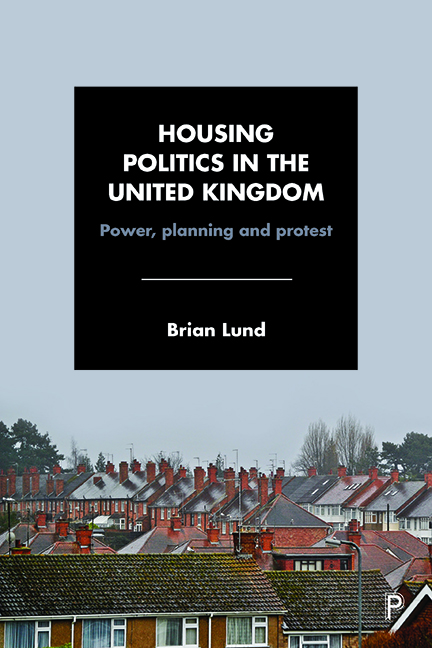Book contents
- Frontmatter
- Contents
- Acknowledgements
- Preface
- one Housing and politics
- two Land politics
- three Urban renewal: fencing the cities
- four Private landlords: ‘Rachmans’ or ‘residential property-owners’?
- five A property-owning democracy?
- six Eclipsing council housing
- seven Bending the ‘Third Arm’: politicians and housing associations
- eight Homelessness politics
- nine Devolution: where is the difference?
- ten Conclusion: power, planning and protest
- References
- Index
five - A property-owning democracy?
Published online by Cambridge University Press: 05 April 2022
- Frontmatter
- Contents
- Acknowledgements
- Preface
- one Housing and politics
- two Land politics
- three Urban renewal: fencing the cities
- four Private landlords: ‘Rachmans’ or ‘residential property-owners’?
- five A property-owning democracy?
- six Eclipsing council housing
- seven Bending the ‘Third Arm’: politicians and housing associations
- eight Homelessness politics
- nine Devolution: where is the difference?
- ten Conclusion: power, planning and protest
- References
- Index
Summary
Land tenure complexities in the early 20th century make it difficult to assess how many people owned their homes. Although usually assessed at between 10% and 15% in 1914 (Pawley, 1978), local studies (Daunton, 1983) demonstrate considerable variations around this approximation. Holmans (2005) estimated owner-occupation at 23% in 1918 and a 2013 Census Report (Office for National Statistics, 2013) gave a 20% figure. Owner-occupation increased from around 750,000 after the First World War to 3,250,000 by 1938, when the homeowner proportion was 34%. The Conservative Party and the building societies nurtured progression towards a ‘property-owning democracy’. The catchphrase was coined by Noel Skelton, a Conservative Scottish Unionist MP and informal leader of a Conservative Parliamentary group, the ‘Young Men's Christian Association’, whose membership included Anthony Eden and Harold Macmillan. Sir Alec Douglas Home, Skelton's Parliamentary Private Secretary from 1931 to 1935, was also influenced by Skelton.
In Constructive Conservatism, Skelton (1924, pp 10–12) argued that because Britain had become an educated democracy, its citizens were susceptible to ‘fundamental principles’ embodying a ‘social conscience’, an ideology coming from ‘the Socialist disguised as an educator and a teacher’. He claimed that the Conservatives had to occupy the moral uplands, territory located in the ‘property-owning democracy’ idea. Skelton turned the 18th-century notion – only ‘the man of property’ could be trusted to vote responsibly – on its head. The franchise could no longer be denied to those without assets, so those without property had to be supplied with enhanced opportunities to acquire individual assets and develop the ‘character’ coming from ownership responsibilities. Although Skelton had a broad view of property, including share-ownership, homeownership came to dominate the Conservatives’ property-ownership notion. The Right to Buy was motivated, in part, by the desire to break the relationship between living in a local authority house and voting Labour. Promoting homeownership had other potential advantages for the Conservatives, with Ansell (2013) arguing that ‘stored’ homeowner wealth undermines support for redistributive social protection policies.
Between 1945 and 1954, the owner-occupied market share declined. However, post-1955, sustained growth was promoted by: tax relief on mortgage interest; homeownership endorsement by the Labour Party leadership; erratic but overall positive price increases; selling from the private landlord sector; low-cost homeownership schemes; and council house sales.
- Type
- Chapter
- Information
- Housing Politics in the United KingdomPower, Planning and Protest, pp. 117 - 146Publisher: Bristol University PressPrint publication year: 2016



